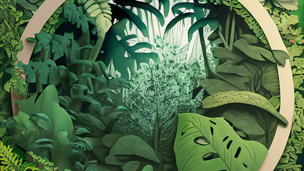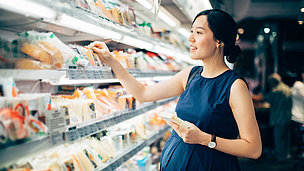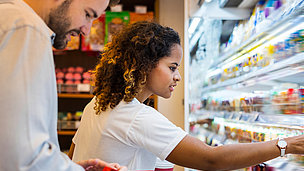
The packaging of the future - calls for all-rounders – how global trends drive an industry forward.
Climate change, pandemics and conflicts over water and other natural resources are just some of the global challenges and crises that we are currently being forced to tackle, whether we like it or not. "Polycrises" is the scientific term for what we are experiencing, and if we are going to find solutions we need to start thinking outside the box. Moreover, because these problems are all interlinked, a holistic approach is called for.
But what does this have to do with the packaging of the future? Everything, actually. After all, this global situation with its often sluggish supply chains and rapidly increasing digitalisation are the framework in which our society and our economy operate, and the packaging industry is no exception.

All these developments are giving us a glimpse of the trends that will shape markets in major ways over the coming years – trends that may indeed radically alter them. Although some of these global changes are not really new, the packaging industry – like many other industrial sectors – was rather late in paying proper attention to the signs of the times. Now the changes are in some cases having a serious impact with huge consequences for entire systems. The good news is: if we respond swiftly and in a coordinated way, we may well manage to sail through these disruptions.
In order to actively help shape the future of the packaging industry, it is more important than ever to recognise relevant trends, foresee their impact and use them as the basis for company policy. After all, only this knowledge combined with networked thinking will enable us to make sound, future-oriented and genuinely sustainable decisions. The following are the three most important trends:
Trend #1:
Genuine sustainability
Consumers have come to expect greater sustainability and their purchasing behaviour is increasingly based on sustainability criteria. Sustainability issues have also acquired a higher priority on the agendas of politicians and consumer goods manufacturers alike. That is changing packaging enormously.
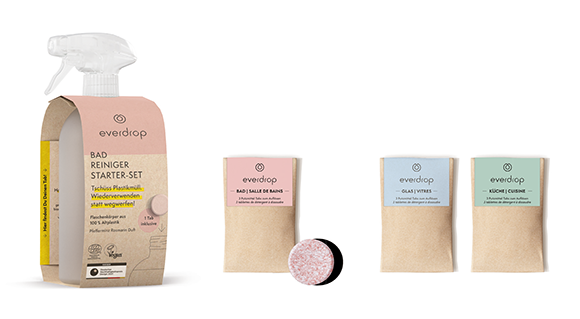
Environmentally friendly packaging needs to live up to the three Rs of waste management: “refuse, reduce, reuse”, in that order. Alongside the prime objective of avoiding unnecessary packaging wherever possible, materials that are new, regenerative, cycle-based and ideally made from a single raw material are the ones that promise to deliver the required solutions.
But that is not enough: along with this kind of sustainable packaging material, there are a variety of features and information that lay people will not see until they look twice and maybe not even then. For example, QR codes allow complex information to be included on accompanying media in order to tell the buyer where the raw materials come from, via what supply chain and how the packaging will be recycled. After all, once the product itself has fulfilled its purpose, life goes on for the packaging material. The whole thing is tantamount to the quest for the Holy Grail.
-
Holy Grail 2.0
Various technologies to improve recycling along the packaging value chain are currently being studied. One of the most promising is the digital watermark. Looking to make packaging easier to sort, the HolyGrail 2.0 initiative is running trials all over Europe to determine whether and how digital watermark technology can help improve recycling quality.
Over 120 international companies and organisations, including Linked2Brands as an enhancement partner, have now joined the quest for the Holy Grail. Digital watermarks are at the core of this joint approach. Invisible to the human eye, they are concealed on printed packaging and function like a barcode. Although invisible,
the codes are the size of a stamp and cover the whole surface of the packaging in a grid pattern. Ensuring that this does not impinge on the packaging design is a job for the experts.Linked2Brands has formed a strategic partnership with Digimarc, a leading provider of digital barcode solutions, to unobtrusively incorporate Digimarc codes into the artwork data for packaging.
-
Successful test runs
At the waste-sorting plant, high-resolution cameras scan the code for information about the materials. The system can then sort the packaging waste into the different material streams more efficiently than before. In September 2021, a near-infrared sorting system capable of reading the digital watermarks was tested for the first time in Copenhagen: 232 different watermarked packaging items made from hard and flexible plastics and fibres – over 100,000 pieces of rubbish in total – were first mixed up and then sorted automatically.
These initial tests proved very successful as did further semi-industrial trials in spring 2022. Other major pilot projects are also putting the technology through its paces in commercial sorting and recycling plants. This will test efficiency and reliability under real operating conditions.
Trend #2:
Digital transformation
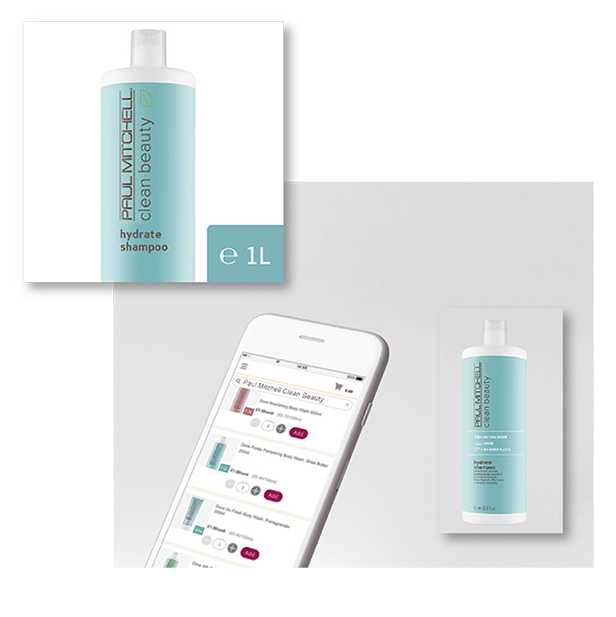
The pandemic has changed consumer behaviour – giving an enormous boost to digitalisation, e-commerce and other processes. Taking Germany as an example: after two years of Covid-19,e-commerce has become the new normal, and it now determines how goods are traded. Retailers, including digital services (like eBooks and music streaming), saw their turnover rise above the €100 billion mark for the first time in 2021.
The greatest growth drivers in this case (with a turnover increase of 36.4 per cent) are fast-moving consumer goods (FMCG), i.e. food, health and beauty products, pet food and the like. The market share of online food sales is still relatively small (almost €4 billion compared with €19 billion for clothing), but sooner or later the new buying habits are bound to push demand for optimised packaging. Consequently, we can expect packaging design to be increasingly scrutinised for e-commerce compatibility. From changing the composition of padding materials to simply reducing the packaging weight – everything will be need to be tweaked.
It may not seem immediately apparent, but space is also short on the online shelves of this world. Brands that use this much reduced platform better and earlier for their product presentation have clear advantages – in particular on mobile devices. Appealing graphics or hero images are no longer just “nice to have”, but are becoming key features that the industry must always keep in mind.
Trend #3:
Catering to diverse customer needs
Customer needs and preferences are also constantly changing. Product manufacturers are responding with a range of ever more individualised products and packaging. Just think of all the different taste and scent variations your favourite breakfast cereal or shampoo may now come in. The same goes for products adapted to different diets and portion sizes or re- quiring special ingredients. There are the lactose-free or vegan versions, the food for kittens and for teenage or elderly cats. Some products are sold in portions, others are resealable or easy to open – all things the packaging needs to take into account.
Therefore, a brand not only has to stand out from the competition; buyers should also be able to identify and find the right product quickly and easily. Alongside the product design, individual item numbers (stock keeping
units; SKU), which allow all the different variants to be organised, are helpful here. The SKU carries all the key information: for example, along- side the basic description “natural yoghurt”, it also provides further details like “500-g pot” and “organic”. The natural yoghurt produced by the same dairy that comes in a 250-g pot and in conventional quality will have a different SKU. For any forward-thinking packaging designer analysing, organising and presenting this kind of information as early as possible in the process is an absolute must.

-
Driven or Driving?
In addition to these trends, there are further factors that influence the packaging industry in fundamental ways. Companies are seeing their ability to plan evaporate amid fluctuating raw material prices. 50 to 70 per cent of packaging consists of raw materials and is hence subject to a high level of volatility. This also means greater investment risks. Investor expectations are also changing and investors are increasingly factoring sustainability criteria into any investment decision. Future success in the packaging industry therefore hinges on truly forward-looking thinking and strategies. As packaging becomes more of a political issue, companies also face more and stricter regulations.
For example, in the European Union, companies with more than 250 employees and an annual turnover above €40 million will in future be required to publish sustainability reports. It doesn't stop there, however. Companies that show convincing expertise in this area will also be the most likely to survive in a highly contested market. As brand and consumer protection becomes increasingly important and complex and counterfeiters become progressively more skilful, we need packaging that is forgery-proof and thus protects both manufacturers
and consumers.
Within the market, alliances, knowledge transfer and joint action are called for: for instance, brand manufacturers and retailers are increasingly making use of the circular economy (as described under Trend #1). Over 500 companies across the world, including many well-known global players, have committed themselves to the New Plastics Economy. They want to switch completely to recycled and compostable plastics as early as 2025, consolidate reusable systems and finally eliminate problematic materials like PVC and EPS. – The packaging industry operates at the centre of this global circular economy and therefore faces special challenges.
Indeed, any solution must be global: while the European market has reached saturation point, markets in Asia, Africa and South America are rapidly gaining ground. As purchasing power grows in these countries, the demand for packaging will continue to rise rapidly. And no matter where the packaging manufacturers, service providers or users are based and do business, sustainable solutions should always be the natural answer. The future will reveal which of these factors and trends ultimately drives the packaging industry. Whoever takes the changes and disruptions into account in their thinking and actions, will move a great deal closer to securing long-term success.
